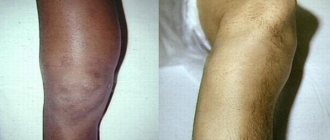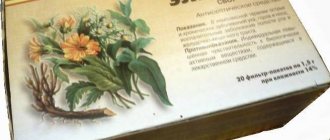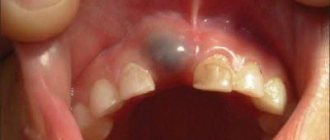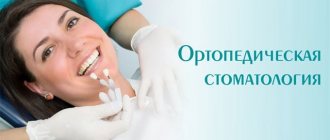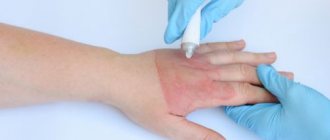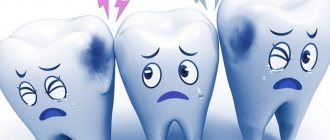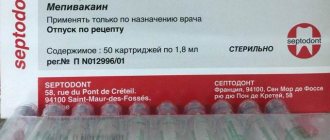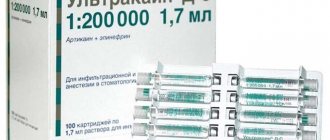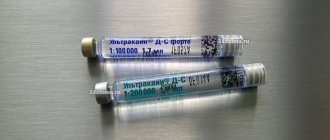T. A. Nefedova chief physician of the CrocoDent clinic, Russia, Moscow
Statistics from 20 years of use of the anesthetic Sevoran in various countries allows us to assert that today it is the safest and most harmless drug for general anesthesia. In the European Union, USA, Japan and other civilized countries of the world, no medical procedures are carried out forcibly on children. A doctor who treats forcibly will be deprived of his license, and parents of parental rights.
In our country, parents still have a choice: to hold their child and forcefully try to treat teeth or to cure everything “in a dream”: quickly, efficiently, and most importantly without pain and fear, giving their baby not only healthy and beautiful teeth, but also fearless visit to the dentist for life.
The latest generation anesthetic “Sevoran” is the best that modern science can offer for safe treatment during sleep, therefore general anesthesia is carried out with this drug. When treating teeth under anesthesia, pediatric dentists first of all pay attention to the safety of the little patient.
The drug "Sevoran" creates psychological comfort for the child:
- sleep “from the first breath”;
- nice smell;
- waking up immediately after the supply stops;
- removal of “Sevoran” from the body occurs quickly and without a trace;
- There are practically no allergic reactions.
STORIES
Content
In modern dentistry, anti-stress treatment methods have been successfully used for a long time, which is especially important for children. In particular, Sevoran anesthesia allows children to avoid anxiety and pain and treat their teeth with comfort. After waking up, the child will not experience unpleasant sensations, he will not be disturbed by unpleasant memories. The absence of psychological trauma will save the child from dental phobia and will lead to the fact that in the future he will consult a doctor as soon as he feels some kind of problem with his teeth, and will not wait until the last minute, when the tooth most likely cannot be saved.
Sevoran anesthesia for children in dentistry
When treating children's teeth, Sevoran anesthesia has actually become the standard. Its use provides invaluable benefits.
Complete security. Sevoran is approved for use in children over one year of age. This drug has been well tested, tested, and has been used for quite some time. It does not cause severe side effects, does not place a large burden on the body, and no toxic metabolites are formed when administered. It only works as long as it is supplied through a special mask; as soon as the doctor turns off the supply, the effect stops, and after a few minutes the patient wakes up, except in those cases when the medicated sleep turns into normal and the child no longer sleeps under the influence of the drug, but on its own.
Perfect efficiency. Under the influence of the drug, the child does not experience any discomfort, pain, anxiety - he sleeps soundly, and the doctor carries out treatment at this time. Sevoran has not only a sedative and hypnotic effect, but also an analgesic effect, so it is used even in cases where local anesthesia cannot be used (for example, due to allergies) or may be insufficient (for extensive dental procedures).
Ease of administration. Sevoran is an inhalation drug that is administered through a breathing mask. In this case, no injections or intravenous injections are necessary.
Hypoallergenic. There is no allergy to this drug. It is also used in cases where the patient has allergic reactions to other anesthetics.
The Dental Master clinic has the necessary licenses for anesthesiology and resuscitation, allowing you to perform treatment under anesthesia. We also have all the necessary modern equipment and highly qualified doctors. During treatment, the child is under constant supervision of an anesthesiologist, who, using special equipment, monitors the baby’s condition and will take appropriate measures if any changes occur.
results
The stage of excitement during induction of anesthesia in children of the 1st group was 3.5 times more common (with a 95% CI from 0.18 to 0.41) than in children of the 2nd group. Tonic-clonic movements of varying severity were recorded in 163 (77.6%) children of the 1st group and in 19 (21.1%) of the 2nd group; R
<0.001 (Fig. 1).
Rice.
1. Frequency of excitation during induction of anesthesia in children of the study groups. The average heart rate in children of group 2 at the stage of induction of anesthesia was 106±12 beats/min, which is 21.8% more than in children of group 1, in whom this figure was 87±8 beats/min; R
<0.05 (Fig. 2).
Rice.
2. Average heart rate during induction of anesthesia. HR - heart rate. Bradycardia (heart rate less than 75 beats/min) at the stage of induction of anesthesia in patients of the 1st group occurred 8 times more often than in patients of the 2nd group (with 95% CI 0.05-0.32) and was recorded in 76 (36.1%) patients of group 1 and 4 (4.4%) patients of group 2 ( p
<0.001). Severe bradycardia (heart rate 60 beats/min), which required intravenous atropine, was recorded in 19 (9.04%) children of group 1. In patients of group 2, this degree of bradycardia was not observed (Fig. 3).
Rice. 3. Frequency of bradycardia during induction of anesthesia. Post-anesthesia agitation in patients of group 1 was more than 5 times more common than in patients of group 2 (with a 95% CI of 0.06-0.52). This type of complication of inhalation anesthesia was recorded in 52 (24.7%) patients of group 1 and in 4 (4.4%) patients of group 2; p
<0.006 (Fig. 4).
Rice. 4. Frequency of post-anesthesia agitation.
In what cases is mask anesthesia with Sevoran used in children?
There are specific indications for the use of Sevoran for children in dentistry:
- age 1-3 years – at this time it is difficult for a child to sit still in the dentist’s chair, which makes treatment difficult, and in some cases makes it impossible,
- panic fear of the dentist, which cannot be eliminated in other ways,
- allergy to local anesthetics, which will not allow for quality treatment,
- various diseases, as well as developmental features that do not allow the doctor to establish contact with the child,
- a large amount of dental intervention requiring prolonged treatment or serious impact (for example, tooth extraction).
In each specific case, the pediatric dentist of our clinic discusses in detail the prospects for treating the child under anesthesia with the parents, talks about all the nuances, explains the advantages and features of the technique, and invites an anesthesiologist for consultation.
Monitoring the child's condition under Sevoran
Regardless of the duration of treatment, an anesthesiologist and a nurse anesthetist are always with the baby. They monitor the child’s well-being according to an expanded standard. The control zone includes:
- Heartbeat.
- Blood oxygen level.
- Arterial pressure.
- Body temperature.
As well as other indicators if necessary.
Treatment of baby teeth with sevoran
Parents often ask themselves the question: is it worth treating a child’s baby teeth if they are already falling out? There is some reason for this - indeed, to waste energy, force the child to undergo not very pleasant treatment procedures only so that the cured tooth falls out after a short time and a permanent one grows in its place. But the thing is that replacing baby teeth with permanent ones is a long process. On average it lasts approximately 10 years. But it is not at all uncommon for individual baby teeth to survive until the age of 20 or even 30 years. Imagine that this particular baby tooth will fall out in a child only after 10 years. Will he suffer all these years? And then, even if the baby tooth does not hurt much, but simply collapses, what will the child chew on until his permanent tooth erupts?
Simply put, it makes no sense to treat only those baby teeth that are already loose and close to falling out. But those that are still holding up well can and should be treated.
Treatment of baby teeth with Sevoran will be completely painless and comfortable. The method is no different from the treatment of permanent teeth.
Method of dental treatment under anesthesia Sevoran for children
Sevoran is administered in two stages - the initial administration through an oral-nasal mask, and then, when the child has fallen asleep (literally after 2-3 breaths), a laryngeal mask is placed, through which the patient breathes during treatment. Local anesthesia can only be used in cases where it is necessary to extend the analgesic effect for a period after treatment and after the end of anesthesia (for example, when several teeth are removed). Inhalation anesthesia with Sevoran is effective only during its introduction into the body. Once the feed stops, most babies are usually awake within 20 minutes.
Children cope with recovery from anesthesia differently, because they themselves are all different, with their own characteristics of the body. Sometimes there may be a short-term lack of coordination of movements, in some cases - a state of excitement. Some people experience dizziness and nausea. Some children may be fussy after waking up - this may be caused by unusual sensations.
Our clinic has a separate room where the child can wake up on his own, naturally in the presence of his parents. Oxygen was supplied to this room to speed up the removal of the remnants of anesthesia from the child’s body, and an anesthesiologist monitored the awakening of the little patient.
Advantages compared to narcotic drugs
| Disadvantages of general anesthesia | Advantages of Sevoran |
| Route of administration Intravenous or intubation | Method of administration Inhalation |
| Toxicity Toxic drugs, opiates | Toxicity Safe hypnotic drug without toxic impurities |
| Effect on the body Deep failure into unconsciousness | Effect on the body Plunge into sleep without losing consciousness, reflexes are preserved |
| Exit from the state Several hours. Brain fog, nausea, vomiting, dizziness | Exiting the state Quick awakening in 5-10 minutes. Clear mind, no side effects |
| Hospitalization Mandatory hospital stay for 1-2 days | Hospitalization After 30-40 minutes you can go home |
Contraindications to the procedure
In order for dental treatment under Sevoran to be completely safe, it is important to take into account the patient’s health characteristics and not use this type of anesthesia if there are contraindications, which include:
- individual intolerance to this drug (very rare, but does occur),
- hypertension and increased intracranial pressure,
- malignant hyperthermia.
In addition to absolute contraindications to Sevoran anesthesia for children, there are factors in the presence of which this drug should be prescribed with caution, taking measures to relieve possible complications. These factors include:
- cardiovascular diseases (CHD, etc.),
- chronic liver and kidney diseases,
- neuromuscular disorders,
- tendency to seizures,
- simultaneous use of calcium channel blockers (nifedipine, cordipine, verapamil), alpha and beta sympathomimetics (isoprenaline, epinephrine, norepinephrine).
Are there any consequences after using Sevoran in children during dental treatment?
If safety rules are followed, the effects of Sevoran in children are almost always mild (when compared with other types of anesthesia) and short-lived. Mainly:
- dizziness, drowsiness, lethargy - goes away within half an hour,
- nausea and vomiting (in 2-3 patients out of 100),
- increased excitability, moodiness (in about 15 small patients out of 100), mostly due to long abstinence from food and unusual sensations,
- increased temperature (as a rule, this is a consequence of serious dental procedures - tooth extraction, trauma to the mucous membrane),
- unpleasant or painful sensations - again due to dental procedures.
All these possible effects do not pose a threat to the baby’s health, so they should not be considered decisive when planning treatment. Of course, if there is an opportunity to treat teeth without anesthesia, you should take advantage of it. In situations where anesthesia remains the only remedy, it should not be neglected. Dental treatment for children under Sevoran anesthesia is completely harmless and safe, which is confirmed by numerous medical studies, as well as the large-scale use of this type of anesthesia in dental clinics in many countries in Europe, America, Israel, and Russia.
As we have already said, Sevoran does not have a serious effect on the central nervous system, it dissolves poorly in the blood, does not irritate the respiratory tract, does not leave toxic metabolites (decomposition products), and has virtually no effect on blood counts and metabolism. Within a few minutes after stopping the supply, Sevoran is eliminated from the body through the lungs, and small residual amounts are excreted in the urine. All residual and side effects after cessation of anesthesia in a child quickly disappear without leaving any traces.
Preparation
Usually, no specific preparatory measures are required before using Sevoran; the operation can be performed urgently. But if the patient is elderly or has general somatic diseases, anesthesiological preparation is required, which begins with a consultation with our anesthesiologist-resuscitator. The doctor will take an anamnesis and perform an electrocardiogram directly at the Center; you won’t have to run anywhere .
If factors are found that impede the use of the drug, consultation with specialists in the underlying disease and general clinical studies will be required.
[doctor's block]
Is there an alternative to using anesthesia?
Yes, of course there is! At the Dental Master clinic, we use not only mask anesthesia Sevoran for children (or another drug for intravenous administration - propofol), but also mild sedation with nitrous oxide. The oxygen-nitrogen mixture is supplied through a nasal breathing mask. This option is much easier than anesthesia - the child does not fall asleep, but remains conscious, hears everything, understands and can respond to the doctor’s requests, but is in a calmer and more relaxed state.
This anti-stress treatment option requires local anesthesia because nitrous oxide is calming but does not have an analgesic effect. Our pediatric dentist Tatyana Vladimirovna Ermakova will do everything to calm the child, set him up in a positive mood and treat him using only nitrous oxide sedation and local anesthesia, but in some situations, the only way to properly treat a child’s teeth is anesthesia.

